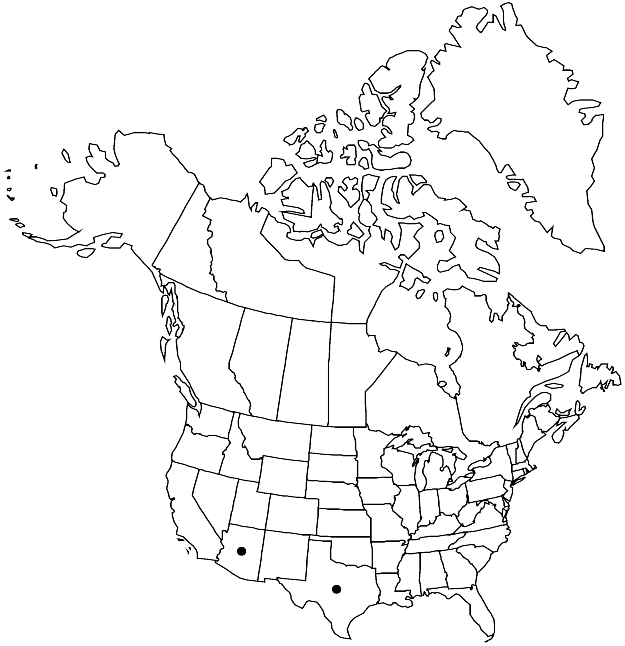Halimolobos pubens
Syst. Bot. 32: 146. 2007.
Annuals or biennials; (base not woody). Stems erect, unbranched or branched distally, (2–) 3–7.5 (–11.5) dm, trichomes sessile. Basal leaves: petiole 0.4–2 cm; blade oblanceolate to oblong, 2–8 (–11) cm × 05–20 (–30) mm, margins coarsely dentate or somewhat pinnatifid, surfaces with sessile trichomes. Cauline leaves sessile; blade oblong to oblanceolate, 1.5–5 (–6) cm × 3–12 (–15) mm (smaller distally), base truncate or broadly cuneate, margins coarsely dentate, pubescent as basal. Racemes considerably elongated in fruit. Fruiting pedicels divaricate, (slightly curved upward or straight), (6–) 8–15 (–18) mm, (trichomes appressed). Flowers: sepals widely spreading, 1.5–2.5 × 1–1.5 mm; petals spatulate, 1.5–2.5 × 0.7–1.2 mm, claw obscurely differentiated from blade, to 1 mm; filaments spreading, 1.5–2.5 mm, equal to petals; anthers 0.7–1 mm. Fruits ascending, straight, not torulose, oblong to ovoid, slightly angustiseptate to subterete, 0.5–0.8 (–0.9) cm × 3–4 (–5) mm; ovules (60–) 70–110 per ovary; style 0.3–0.8 (–1) mm. Seeds biseriate, 0.6–0.8 × 0.4–0.5 mm.
Phenology: Flowering late Apr-early Aug.
Habitat: Spring-fed areas, canyons, draws, streamsides, shaded moist grounds, grassy plains, creek beds, tobosa flats
Elevation: 1200-1500 m
Distribution

Ariz., Tex., Mexico (Coahuila), Mexico (Sonora)
Discussion
Halimolobos pubens appears to be restricted in Texas to Brewster, Jeff Davis, Presidio, and Reeves counties. It has recently been reported from Cochise County, Arizona. For a detailed discussion of its generic disposition, see C. D. Bailey et al. (2007).
Selected References
None.
Lower Taxa
"elongated" is not a number."thick" is not a number."dm" is not declared as a valid unit of measurement for this property."dm" is not declared as a valid unit of measurement for this property.